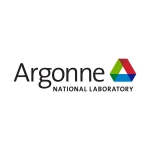LEMONT, Ill.–(BUSINESS WIRE)–An important new study by researchers at the U.S. Department of Energy’s (DOE) Argonne National Laboratory has yielded critical fresh insights into the lithium production process and how it relates to long-term environmental sustainability, particularly in the area of transportation with batteries and electric vehicles.
The paper was the result of a unique collaboration with SQM, a Chilean company that is one of the world’s biggest producers of lithium.
According to Argonne lifecycle analyst and lead author Jarod Kelly, the researchers — using operational data supplied by SQM — found that the sourcing of lithium, from both a process and location perspective, can strongly affect its associated environmental impacts.
“The results show that concentrated lithium brine and its related end products can vary significantly in energy consumption, greenhouse gas emissions, sulfur dioxide emissions and water consumption depending upon the resource allocation method used,” Kelly explained.
The researchers modeled brine-based lithium extracted from the Salar de Atacama, a large salt flat in northern Chile near the Andes Mountains. The lithium is naturally dried in large ponds to evaporate the water, concentrate the lithium, and remove impurities. Materials and energy are later added to produce lithium carbonate and lithium hydroxide. These two end products are shipped worldwide to battery cathode producers that process them into a variety of battery materials.
The study findings could have major implications for how to optimize lithium production, which would result in more environmentally friendly products, particularly battery electric vehicles. The International Energy Agency predicts that demand for lithium may grow by as much as 40 times between 2020 and 2040, mainly due to more electric vehicles.
“Examination of current lithium production and the pursuit of future production, including from within the U.S., are critical to sustaining electric vehicle deployment,” said Michael Wang, director of the Systems Assessment Center at Argonne and a study co-author.
Added Veronica Gautier, SQM’s head of innovation: “According to our sustainability plan, we want to look more closely at carbon emissions, water consumption and energy consumption in our lithium products, and see how it affects the rest of the value chain. This information will help us achieve our goal of being carbon neutral by 2030.”
The formal analysis used Argonne’s open-source modeling tool, GREET (Greenhouse gases Regulated Emissions and Energy in Technologies), with detailed data and technical insight coming from SQM.
Read the full story here.
Contacts
Christopher J. Kramer
Head of Media Relations
Argonne National Laboratory
Office: 630.252.5580
media@anl.gov


.jpg)



















